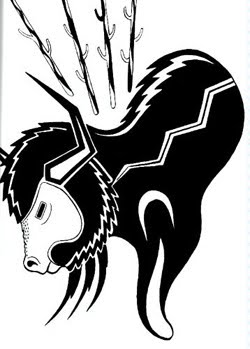Family interactions and relationships are apparent in the myths or legends in the Kiowa tribe. Here are the different people in the family and their roles:
· Women: Kiowa women were in charge of the home. Besides cooking and cleaning, a Kiowa woman built her family's house and dragged the heavy posts with her whenever the tribe moved. Houses belonged to the women in the Kiowa tribe.
· Men: Men were hunters and warriors, responsible for feeding and defending their families. Usually only men became Kiowa chiefs, but both genders took part in storytelling, artwork and music, and traditional medicine
· Marriage: Marriage was rather quick and painless. After giving gifts to the father of the bride, the newlywed couple would live with her family until the first child was born, then the man would be able to have his own lodging (his wife usually stayed with her mother, grandmother, sisters and aunts to raise the children). The Kiowa venerated their
children and did not believe in corporal punishment.
· Children: They played with each other, went to school and helped around the house. Many Kiowa children liked to go hunting and fishing with their fathers. In the past, Indian kids had more chores and less time to play in their daily lives, just like colonial children. But they did have dolls, toys, and games to play. A Kiowa mother traditionally carried a young child in a cradleboard on her back--a custom which many American parents have adopted now.
· Grandparents: Like many Plains Indian tribes, the Kiowa Elders socialized and taught the young through oral traditions. The grandchildren would live close to grandparents to learn of their culture and past. (source: bigorrin.org)
Think about the characters in the myth of Tai-me and its origin (the woman, the sun, the child, the twins, the grandmother, the grandfather). After reading about the Kiowa family in the list above, think about how or why the people were portrayed as they were.
For example, why would have the grandmother been symbolized by a spider? Or the grandfather by a snake?
Do you think the characters were meant to represent actual people, traditions, history of the traditions, or something else?
